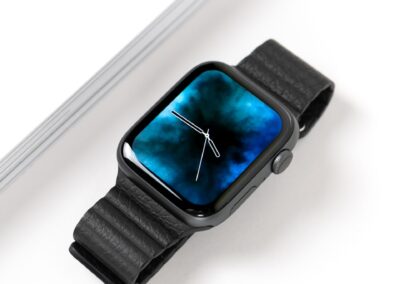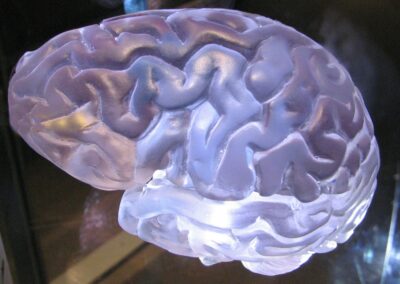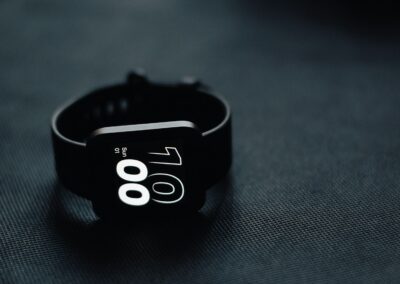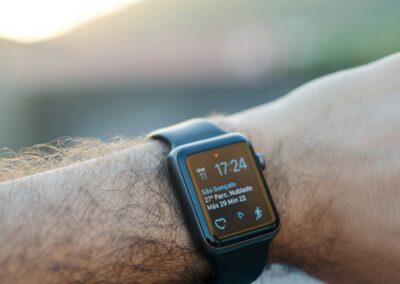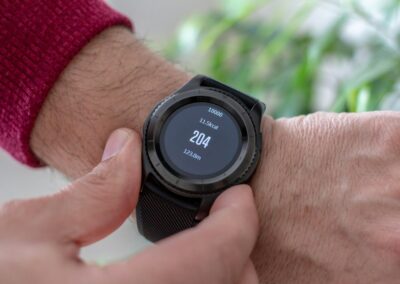Advancements in Wearable Ergonomic Technology
Understanding Wearable Devices and Their Impact on Workplace Safety
Wearable devices for workplace ergonomics are transforming how businesses manage employee health and safety. These devices, equipped with advanced sensors and artificial intelligence (AI), monitor physical movements and provide real-time feedback to workers. By analyzing data such as posture, repetitive motion, and exertion levels, these devices help prevent injuries and improve overall workplace ergonomics.
In regions like Saudi Arabia and the UAE, where technological innovation is rapidly evolving, the adoption of ergonomic wearables is becoming increasingly common. Cities like Riyadh and Dubai are at the forefront of integrating modern technology into their business environments, ensuring that workplaces are not only efficient but also safe for employees. This proactive approach to ergonomics is crucial in reducing workplace injuries and enhancing productivity.
Wearable devices can track various metrics, including the angle of a worker’s back, the frequency of repetitive movements, and the amount of force exerted during lifting tasks. This data is then used to provide instant feedback, alerting workers when they are at risk of injury. This real-time monitoring and feedback system is essential for maintaining a safe and healthy work environment, particularly in industries such as construction, manufacturing, and logistics.
AI-Driven Ergonomic Solutions
Artificial intelligence plays a pivotal role in the effectiveness of wearable ergonomic devices. AI algorithms analyze the data collected by sensors to identify patterns and predict potential ergonomic issues before they result in injury. This predictive capability allows businesses to take preventive measures, such as adjusting workflows or providing targeted training to employees.
Generative AI, a subset of AI that generates new data based on existing patterns, is also being integrated into wearable devices. This technology can create personalized ergonomic guidelines for each worker, tailored to their specific tasks and physical characteristics. For example, a generative AI system might recommend specific stretches or exercises to improve a worker’s posture and reduce the risk of repetitive strain injuries.
In the context of Saudi Arabia and the UAE, the integration of AI into wearable devices aligns with the region’s commitment to technological advancement and innovation. By leveraging AI-driven ergonomic solutions, businesses in Riyadh and Dubai can ensure that their workplaces are not only productive but also safe and healthy for their employees. This focus on employee well-being is crucial for maintaining a competitive edge in the global market.
Blockchain for Data Security and Privacy
The use of wearable devices in the workplace involves the collection and analysis of sensitive employee data. Ensuring the security and privacy of this data is paramount, and blockchain technology offers a robust solution. Blockchain provides a secure and transparent way to store and manage data, ensuring that it is only accessible to authorized parties.
By leveraging blockchain, businesses can protect employee data from unauthorized access and tampering. This is particularly important in regions like the UAE and Saudi Arabia, where data privacy regulations are becoming increasingly stringent. Blockchain’s decentralized nature ensures that data is secure, fostering trust between employees and employers.
Moreover, blockchain can facilitate the integration of wearable devices with other digital systems. For example, ergonomic data collected by wearables can be securely shared with healthcare providers or occupational therapists, who can use this information to offer personalized advice and treatment. This interoperability enhances the overall value of wearable devices, providing comprehensive support for employee health and safety.
Applications and Benefits of Wearable Ergonomic Devices
Enhancing Employee Health and Productivity
Wearable ergonomic devices have a significant impact on employee health and productivity. By providing real-time feedback and personalized recommendations, these devices help workers maintain proper posture and avoid repetitive strain injuries. This, in turn, reduces absenteeism and improves overall productivity.
In Saudi Arabia and the UAE, where there is a strong focus on worker welfare and productivity, the adoption of ergonomic wearables is a natural fit. These devices help businesses create safer and more efficient work environments, contributing to the overall economic development of the region. By prioritizing employee health, companies can ensure that their workforce remains motivated and productive.
Wearable devices also support the implementation of effective ergonomic programs. By continuously monitoring workers’ movements and providing actionable insights, these devices enable businesses to identify areas for improvement and implement targeted interventions. This data-driven approach to ergonomics is essential for achieving long-term health and productivity benefits.
Supporting Leadership and Management Practices
Incorporating wearable ergonomic devices into the workplace supports leadership and management practices by providing valuable data and insights. Managers can use this information to make informed decisions about workflow adjustments, training programs, and ergonomic interventions. This proactive approach to management helps create a safer and more efficient work environment.
Executive coaching services can also benefit from the integration of wearable devices. Coaches can use ergonomic data to develop personalized training programs for executives, focusing on improving posture, reducing stress, and enhancing overall well-being. This holistic approach to executive coaching aligns with modern leadership principles, which emphasize the importance of physical and mental health.
In regions like Riyadh and Dubai, where leadership and management excellence are highly valued, wearable ergonomic devices provide a competitive advantage. By leveraging these devices, businesses can ensure that their leaders are well-equipped to manage their teams effectively and promote a culture of health and safety.
The Future of Wearable Ergonomic Devices
The future of wearable ergonomic devices is bright, with continued advancements in AI, blockchain, and other technologies driving innovation. As these devices become more sophisticated, they will offer increasingly personalized and effective ergonomic solutions, further enhancing their impact on workplace health and safety.
In Saudi Arabia and the UAE, the commitment to technological innovation will continue to support the growth and adoption of wearable devices. By fostering a culture of innovation and investing in cutting-edge research, these countries are positioning themselves at the forefront of the ergonomic technology revolution. This focus on innovation will provide significant benefits for businesses and workers alike.
In conclusion, wearable ergonomic devices represent a significant advancement in workplace health and safety. By leveraging AI, blockchain, and other technologies, these devices provide personalized solutions that enhance employee well-being and productivity. As the adoption of wearable devices continues to grow, they will play an increasingly important role in shaping the future of work and ensuring that workplaces are safe, healthy, and efficient.
#WearableTechnology #WorkplaceErgonomics #InjuryPrevention #AIinWearables #Blockchain #UAE #SaudiArabia #Riyadh #Dubai #BusinessSuccess #LeadershipSkills #ProjectManagement











